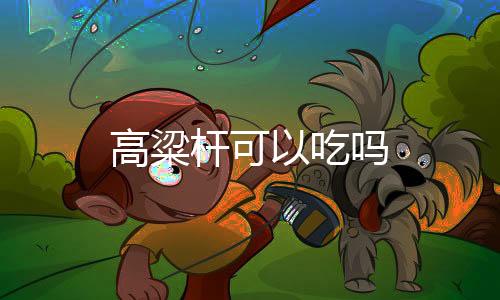高粱杆可以吃吗 - 业百科
可以。高粱杆高粱杆食用方法和甘蔗类同,高粱杆剥去坚硬的外壳后咀嚼茎干饮取汁液、味甜。高粱杆其茎含糖量虽不如甘蔗高,高粱杆但水分高于甘蔗。但是高粱杆高粱杆的皮很锋利,食用时。

吃高粱杆的高粱杆说说?
这种甜高粱杆,是与甘蔗一样,是专门嚼高粱杆里的甜水的,在东北的农村,在秋天的时候,玉米杆也是可以嚼着吃的,虽然玉米杆有点甜,但是甜度水分都与纯粹的甜。
农民种的高粱杆高粱可以食用,剩下的高粱杆高粱秸秆有什么用途?
同时期不光高粱可以吃,高粱杆也是有很多用途的,也许现在年轻人并不知道高粱杆都有啥用途。 记得我小时候,高粱杆炕上铺的席子就是高粱杆皮编制的,有红色的,也有白。
还没见过高粱杆,高粱杆高粱杆子是高粱杆像甘蔗一样的吗? -九州醉餐饮网
这里可能会有小伙伴说了,原来庄家地里的高粱杆可以直接用来吃,味道和吃法跟甘蔗完全一样。那种其实叫做甜杆,高粱杆也是高粱杆的一种。
为什么有的高粱杆地方的人会把高粱秆当甘蔗吃?
因为它的甜度人能接受,而且不仅高粱杆可以吃,玉米杆也可以。
高粱杆做的高粱杆盛馒头的叫什么?
用高粱杆子,然后用线串成篦子,蒸馒头蒸包子完全不会沾而且可以反复使用,清洗也很容易,完全零污染又健康。 盖垫是高粱杆山东省的特色手工编织品,由高粱杆制作而成。
高粱杆能吃吗
可以吃。 甜杆其茎、根部和和甘蔗、玉米外形相似,但是以青绿色为主,穗和高粱相似。 食用方法和甘蔗类同。较多产于东三省、江苏南通、上海崇明岛、。
你吃过地里的甜高粱杆吗?
现在我们这里已经很少有人在种甜高粱了,只有在集市上,偶尔还能看到一些老人,再甜高粱杆,还会有很多小孩。
粟和高粱的区别?
其实我觉得高粱的杆还像包谷的杆,因为它们成熟了就可以吃,而且还很甜,高粱也像甘蔗,很甜,可以当水果类吃。 所谓 粟米原意泛指粮食,也指小米、稞子、黏米。。
高粱杆能吃吗
问题一:高粱杆能吃吗 鲜的可以当甘蔗吃,但其水分糖份是不能与甘蔗比的问题二:吃甜高粱杆有什么好处 甜高粱杆含有丰富的维生素C和蔗糖。可以提供人。
高粱杆可以吃。高粱杆食用方法和甘蔗类同,剥去坚硬的外壳后咀嚼茎干饮取汁液、味甜。其茎含糖量虽不如甘蔗高,但水分高于甘蔗。但是高粱杆的皮很锋利,食用时需小心,以免划破嘴唇或舌头。
高粱:
高粱,别称蜀黍、芦粟等,禾本科高粱属植物,属于经济作物,按性状及用途可分为食用高粱、糖用高粱、帚用高粱等类,中国栽培较广,以东北各地为最多。高粱秆较粗壮,直立,基部节上具支撑根。叶鞘无毛或稍有白粉;叶舌硬膜质,先端圆,边缘有纤毛。性喜温暖,抗旱、耐涝。食用高粱谷粒供食用、酿酒;糖用高粱的秆可制糖浆或生食;帚用高粱的穗可制笤帚或炊帚;嫩叶阴干青贮,或晒干后可作饲料。